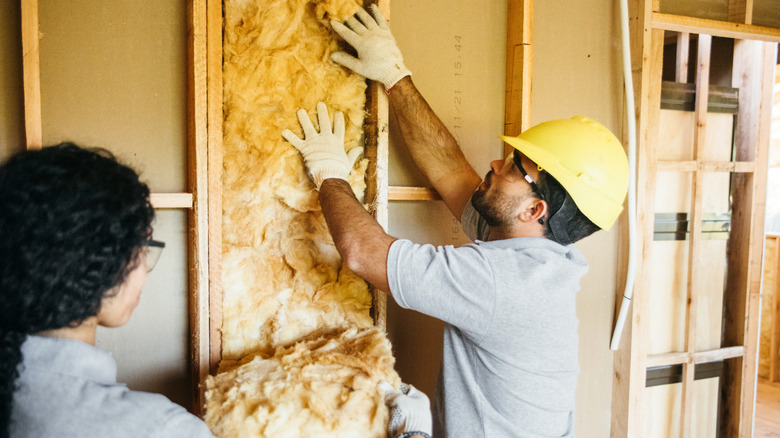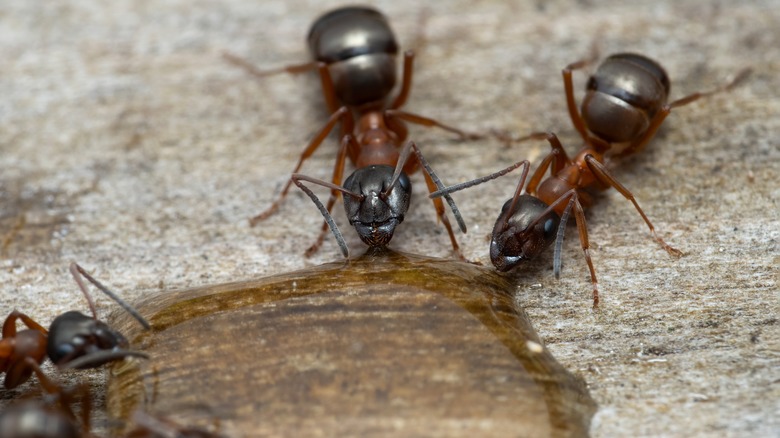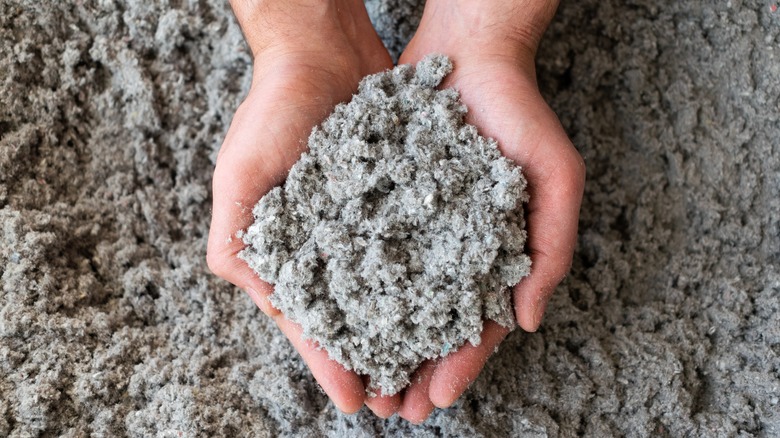Here's How Insulation Can Actually Help Keep Carpenter Ants Out Instead Of In
Choosing the right insulation for your home can do more than save you money on energy bills and reduce noise; it can also keep carpenter ants out. If you've used foam or fiberglass insulation, you're essentially rolling out the welcome mat for these pests. But when you insulate with cellulose, you actively repel carpenter ants thanks to the specific chemicals coating the material. This makes your home an undesirable location for these insects, which can cause actual harm to wooden structures.
The need to deter carpenter ants cannot be overstated. They are not mere nuisances; they bring real trouble. They burrow into the wood in your home, creating tunnels and nesting areas that can lead to severe structural damage. Over time, the issue can escalate from minor annoyances to significant infestations that demand costly interventions. Immediate action, therefore, isn't just advised; it's necessary.
You might think that avoiding insulation altogether would be an effective way to deter ants, but that approach comes with its own set of problems. Insulation is essential for maintaining an energy-efficient home; skipping it would mean higher utility bills and less effective noise control. The key isn't to avoid insulation but to select the right kind.
The underlying science: why insulation attracts carpenter ants
You might be scratching your head, wondering why your insulation becomes a haven for carpenter ants. The draw for these pests isn't coincidental; it's rooted in scientific principles related to the insulation material. It is designed to trap air, effectively reducing thermal exchange between the interior and exterior of a building. This also creates microenvironments with stable temperatures and high humidity levels. In the insect world, carpenter ants are keen on finding such conditions. Ants consider humidity levels when building tunnels and passages, making damp environments highly desirable for nesting.
While insulation isn't a food source for carpenter ants, your home is a good breeding ground. Over time, bits of food may become trapped within the insulating material, which may serve as a source of sustenance for carpenter ants, further incentivizing them to establish a colony within the insulation. Additionally, the density and texture of many insulation materials are relatively easy for carpenter ants to manipulate. Unlike harder substances like brick or concrete, insulation offers little resistance to the powerful mandibles of these ants. The ease of tunneling and nest building within insulation thus provides another tick in the "pros" column from a carpenter ant's perspective. Understanding these scientific factors gives you a leg up when considering insulation materials, especially if keeping your home ant-free is on the agenda, along with energy efficiency.
The effectiveness of cellulose insulation: more than just thermal regulation
While most types of insulation serve the primary purpose of thermal regulation, cellulose insulation takes it further by acting as a pest deterrent for your property. What sets cellulose apart is its treatment with chemicals like boric acid, which serves multiple functions — it stops fungus growth and also works well as a flame retardant. But here's where it gets even more interesting: boric acid is a highly effective pest control agent. Insects have a low tolerance for this chemical. When they come into contact with boric acid-treated cellulose, they either avoid the area altogether or suffer lethal consequences upon ingestion.
Regarding material composition, cellulose also brings its dense composition, created from recycled paper products. Interestingly, it is denser than other common insulating materials. This poses a further challenge to carpenter ants — they'll find it far more difficult to tunnel through than other, softer insulating materials. In short, cellulose insulation stands out as an all-around performer. This material provides a comprehensive solution for safeguarding your home from fire safety and mold prevention to effective pest control and sound absorption.


